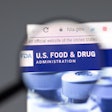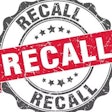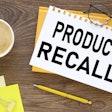Petfood market trends aren’t the only things to keep an eye on going into 2015: Various regulations are being implemented that, while the industry is already aware of them, nonetheless stand to enact important changes that need to be on the radar of every petfood professional.
“The grace period for enforcement of the new AAFCO calorie content statement regulations expire for some dog and cat food products in mid-2015,” says David Dzanis, DVM, PhD, DACVN, of Regulatory Discretion Inc. “While the data required to calculate calorie content is not new or difficult to obtain (essentially, data obtained from the same proximate analyses needed to determine guarantees), manufacturers who have yet to take steps to add this information to the label are advised to start doing so now.”
Regulations to implement new federal labeling requirements specific to petfoods under the US Food and Drug Administration (FDA) Amendments Act of 2007 (FDAAA) are still forthcoming, says Dzanis. “These have a potential to dramatically affect how petfoods are labeled in the future. However, with FDA's preoccupation with all things related to FSMA (Food Safety Modernization Act), there may not be much development on this front in 2015.”
According to Trouw Nutrition, the FSMA will continue to affect the petfood industry in 2015. “Supply chain security/risk management is one of the main focuses,” says the company. “Without the firm regulations in place, the industry is anticipating what is meant by each recommended guideline. With that said, they will error on the side of caution and request much deeper information than is required.
“Suppliers, manufacturers and all companies in between are scrambling to try to provide all the requested documentation up the chain,” says Trouw. “Although FDA has voiced that it is only necessary for 1 level forward and 1 level backward, many organizations are taking that much further. It is important to have this documentation and knowledge in the chain, but it doesn’t need to be present at every level of the supply chain. Each level needs to have a check in place that verifies that that these checks are being done. That could be as simple as an audit of that company in the chain that verifies this evidence.”
Another requirement expected in 2015 is The GHS (Global Harmonization System) requirement for new SDS (Safety Data Sheet) format that will be required at the beginning of June 2015. “This will not only affect SDS creation but it will have a huge impact on labelling,” says Trouw. “Most pet products will not contain high enough inclusions of hazardous ingredients (e.g., selenium, copper, zinc, etc.) to have to include any warning statements or hazard pictograms. This will have a much greater impact on the concentrated ingredient suppliers in the chain.”



















